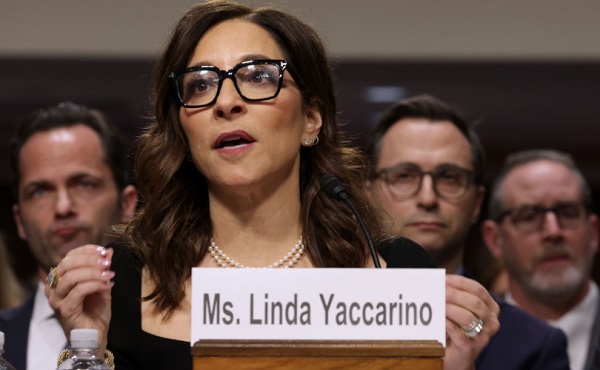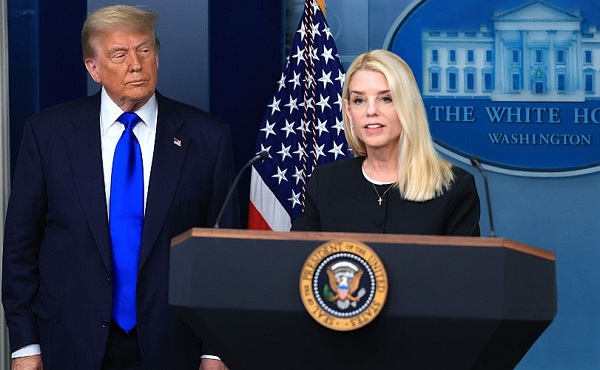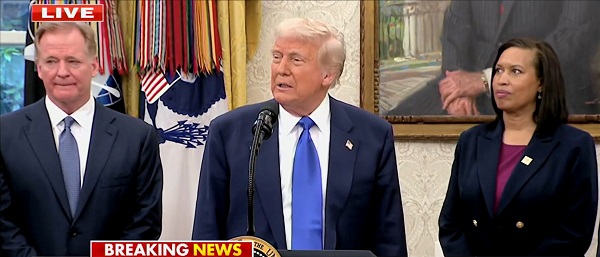2025 Federal Election
CSIS Warned Beijing Would Brand Conservatives as Trumpian. Now Carney’s Campaign Is Doing It.
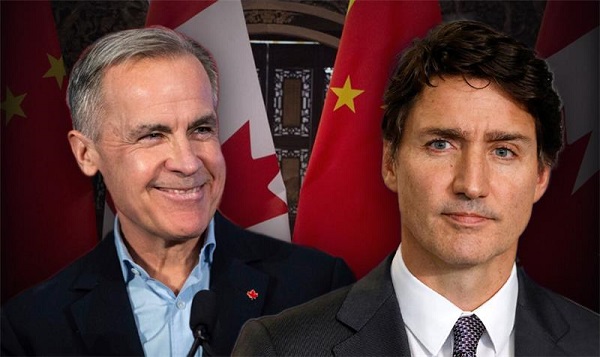
 Sam Cooper
Sam Cooper
Canadian intelligence reported in 2021 that Beijing planned to interfere in Canada’s next federal election with disinformation suggesting the Conservatives “will follow the path of … Donald Trump”—a narrative now echoed in a clandestine dirty tricks operation exposed inside Prime Minister Mark Carney’s campaign.

A 2021 CSIS intelligence bulletin marked “Secret,” warned that Chinese consular officials planned to influence future Canadian elections by portraying Conservative politicians as “Trump-like” and hostile to immigrants. The document has been redacted by The Bureau.
The warning comes from a classified CSIS bulletin dated December 20, 2021 and marked Secret, distributed to Canadian departments including Global Affairs Canada, the Privy Council Office, the Communications Security Establishment, and Five Eyes intelligence partners. The report was based on information from Chinese consular officials in Canada.
According to the CSIS assessment, a consulate official in mid-November 2021 discussed how Chinese influence in federal ridings with large Chinese-Canadian populations had proven effective, and laid out a forward-looking strategy to shape future electoral outcomes. The official reportedly stated:
“Ethnic Chinese voters should be told that if the CPC wins a federal election, the CPC will follow the path of former United States President Donald Trump and ban Chinese students from certain universities or educational programs. This will threaten the future of the voters’ children.”
The consulate official also suggested that during Canada’s next federal election, the message should be circulated that the Conservative Party of Canada “is critical of the PRC and opposed to individuals from mainland China.” The remarks were made shortly after Justin Trudeau’s Liberals won a minority government in the fall of 2021.
CSIS concluded that PRC officials believed Chinese immigrants were relatively easy to influence toward Beijing’s geopolitical goals and could be mobilized to oppose Canada’s Conservative Party. The bulletin describes a broader context in which Chinese state actors sought to paint Canadian Conservatives as hostile to immigrants, aligned with Trump-style nationalism.
The Bureau’s analysis suggests that if Chinese state-linked actors intended to repeat this narrative in the 2025 federal campaign, they would find their narrative echoed by the Liberal Party’s own war room tactics.
Prime Minister Mark Carney this morning acknowledged wrongdoing inside his campaign, following revelations that Liberal operatives had planted fake political buttons at a major Conservative conference in an effort to smear Pierre Poilievre’s campaign as a Trump-style threat to Canada.
The Liberal Party has attempted to downplay the scandal, calling it an instance of overzealous political operatives getting “carried away.” But the parallels to Beijing’s 2021 disinformation strategy—as outlined in the CSIS bulletin—raise broader concerns over domestic political campaigns echoing or amplifying hostile state narratives.
The disinformation scandal was first exposed by CBC News on Sunday, April 13. According to the report, two Liberal staffers attended the Canada Strong and Free Networking Conference last week. Observers have noted ticket prices for the event cost hundreds of dollars, suggesting the Liberal infiltration was well planned and resourced. They scattered buttons reading “Stop the Steal” along with buttons favouring Alberta secession movements and other political messages that would suggest Pierre Poilievre’s campaign is attracting MAGA-like extremists in Canada that may be open to Trump’s earlier jibes of turning Canada into a “51st State.”
The aim was to create the appearance of Trumpian division and election denialism within Poilievre’s camp.
Asked about the scandal at a press conference today, Prime Minister Carney said: “The responsible people have been reassigned within the campaign.”
But the half-apology has failed to quell public concern.
The concerns extend well beyond party politics, in The Bureau’s analysis. Two weeks ago, Canada’s Security and Intelligence Threats to Elections (SITE) Task Force identified a sophisticated PRC information campaign targeting Chinese-language social media in Canada. On March 10 and March 25, the WeChat account Youli-Youmian, linked to Chinese Communist Party propaganda efforts, shared widely amplified posts portraying Mark Carney in a highly favorable light.
One post, titled “The US encounters a ‘tough guy’ Prime Minister,” framed Carney as standing up to Donald Trump’s tariff threats.
According to SITE, both posts were rapidly boosted by a coordinated cluster of 30 smaller WeChat accounts, garnering between 85,000 and 130,000 interactions and as many as three million views. SITE attributed the surge to a broader PRC information operation.
At the SITE briefing Monday, The Bureau questioned whether the task force would investigate the Carney campaign’s “ButtonGate” scandal as potential domestic election interference—especially given the operation echoed a PRC disinformation playbook from 2021 that falsely depicted the Conservatives as Trump-style extremists. The question also raised whether SITE had the capacity to examine any crossover between this Liberal narrative and a broader foreign campaign.
A SITE spokesperson replied cautiously: “National security agencies take any attempt to undermine our democracy really seriously… Not all disinformation is foreign-backed… but SITE is committed to informing Canadians when emerging issues can be linked to foreign state actors.”
The official did not say whether SITE would investigate the Liberal Party’s role in the disinformation campaign.
In the same session, a National Post reporter asked SITE whether they were minimizing the implications of PRC-linked social media accounts appearing to promote Mark Carney.
“There was a lot of talk about the information that was put out,” the reporter said. “But there was also a fair amount of interpretation by many online that viewed the posts in question on WeChat as China endorsing Mark Carney or promoting the Liberals… trying to rig the election, or at the very least, push Chinese Canadians to vote for Mr. Carney.”
SITE responded by emphasizing its broader framing: “In our briefing, as you know, we cited both positive and negative posts. What was and remains important for us is that the Youli-Youmian account is linked to a foreign state, and the information it shared may be used to manipulate. That was what we felt was important to get across.”
The Bureau is a reader-supported publication.
To receive new posts and support my work, consider becoming a free or paid subscriber.
Invite your friends and earn rewards
2025 Federal Election
NDP’s collapse rightly cost them official party status
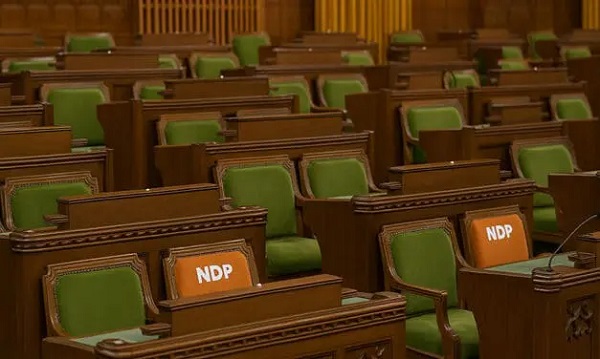
This article supplied by Troy Media.
 By Michael Taube
By Michael Taube
Official party status requires 12 seats. The NDP got seven. End of story
Rules are rules.
That, in a nutshell, is why the NDP wasn’t granted official party status in the House of Commons on Monday. Prime Minister Mark Carney and the
Liberals, to their credit, made the right decision.
Let’s examine why.
The 1963 Senate and House of Commons Act passed an amendment that gave an annual allowance to party leaders other than the prime minister and
leader of the Opposition. In doing so, the Canadian government had to establish what constitutes a “political party.” The definition they came up with was a sensible one: it had to have a “recognized membership of 12 or more persons in the House of Commons.”
This important amendment is still used today.
The NDP fell from 24 to a paltry seven seats in last month’s federal election. (There are a total of 343 seats in the House of Commons.) They finished with 1,234,673 votes, or 6.29 per cent, which was behind the Liberals, Conservatives and Bloc Québécois. Party leader Jagmeet Singh, who had represented the former Burnaby South riding since 2019, finished a distant third in the newly created Burnaby Central riding and resigned.
The NDP’s seven seats is well below the 12-seat requirement needed for official party status. This means Canada’s socialist alternative won’t be able to ask questions in the House of Commons and will lose out on money for research purposes.
Or, to put it another way, they’re plumb out of luck.
Hold on, some people said. They pointed out that the NDP’s seat count and popular vote only plummeted because many progressive voters backed Carney and the Liberals as the best option to counter U.S. President Donald Trump and his tariffs. They felt that the NDP’s long history as a champion for unions and the working class should count for something. They suggested there should be an exception to the rule.
Guess what? They’re wrong.
This is the worst election result in the party’s history. Even its predecessor, the Co-operative Commonwealth Federation (CCF), did marginally better in its first campaign. The CCF won seven out of 245 seats—and earned 410,125 votes, or 9.31 per cent—in the 1935 election. Party leader J.S. Woodsworth, who had represented the riding of Winnipeg North Centre as an Independent Labour MP since 1925, comfortably held his seat.
Meanwhile, this won’t be the first time they’ve ever lost official party status.
The NDP dropped from 43 to nine seats in the 1993 election. It was a dismal showing, to say the least. There was a suggestion at the time that then-party leader Audrey McLaughlin, the first woman to lead a party with political representation in Canada’s House of Commons, deserved a better fate. While the NDP certainly came closer to achieving the 12-seat requirement in this particular election, Prime Minister Jean Chrétien and the Liberals decided against granting them official party status.
Why? As I mentioned earlier, rules are rules.
Then again, British pilot Harry Day notably told his fellow flying ace Douglas Bader in 1931, “You know my views about some regulations—they’re written for the obedience of fools and the guidance of wise men.”
Does this mean that individuals and organizations who follow rules are, in fact, fools? Not at all. While certain rules in a liberal democratic society can range from slightly questionable to utterly ridiculous, they’re usually put in place for a specific purpose.
In the case of the House of Commons, it’s to ensure that a bar has been set with respect to political representation. Is 12 seats the right number? That’s difficult to say. It certainly prevents small protest parties and one-issue parties that unexpectedly win a tiny number of seats in an election from acquiring power and status right off the bat. They need to win more seats and grow in size and stature to reach a point of respectability. Most of them never reach this point and disappear while others float in a constant state of mediocrity like the Green Party of Canada. ’Tis the nature of the political beast.
One final point. If Singh and the NDP had reached double digits in total number of seats in 2025, a solid case could have been made in favour of official party status. If they had finished with 11 seats, it would have almost been a lock. Neither scenario ultimately materialized, which is why Carney and the Liberals did exactly what they did.
Michael Taube is a political commentator, Troy Media syndicated columnist and former speechwriter for Prime Minister Stephen Harper. He holds a master’s degree in comparative politics from the London School of Economics, lending academic rigour to his political insights.
Troy Media empowers Canadian community news outlets by providing independent, insightful analysis and commentary. Our mission is to support local media in helping Canadians stay informed and engaged by delivering reliable content that strengthens community connections and deepens understanding across the country.
2025 Federal Election
Judicial recounts give Conservatives 2 more seats, keeping Liberals short of majority
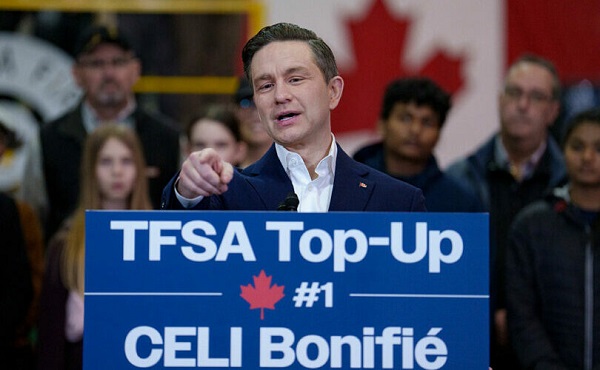
From LifeSiteNews
After a judicial recount, Conservative candidate Kathy Borrelli has officially won over Liberal incumbent Irek Kusmierczyk, in the Ontario riding of Windsor-Tecumseh-Lakeshore.
Judicial recounts from the 2025 federal election have given the Conservative Party two new seats, with one candidate winning by just four votes.
After a judicial recount, Conservative candidate Kathy Borrelli has officially won over Liberal incumbent Irek Kusmierczyk, in the Ontario riding of Windsor-Tecumseh-Lakeshore.
Borrelli got 32,090 votes, with Kusmierczyk getting 32,086 votes, and NDP candidate Alex Ilijoski getting 4,240 votes.
In the Newfoundland riding of Terra Nova-The Peninsulas, Conservative candidate Jonathan Rowe beat out Liberal Anthony Germain by just 12 votes after a recount with the initial result showing a Liberal victory.
The new election results mean the Conservatives now have 144 seats with the Liberals at 169, three short of a majority.
Judicial recounts are automatically triggered when the margin of victory for a candidate is less than 0.1 percent of valid votes.
While these recounts have favored the Conservatives, others have gone in the Liberal Party’s favor.
A May 16 judicial recount switched the southern Ontario riding of Milton East-Halton Hills South to the Liberals with a 21-vote victory over the Conservatives.
Overall, the election results have been a big blow to the Conservative Party, which on top of losing the election also saw its leader, Pierre Poilievre, fail to win his long-held seat. However, Poilievre is expected to run in a yet-to-be-announced by-election in Alberta to reclaim a seat in Parliament.
-
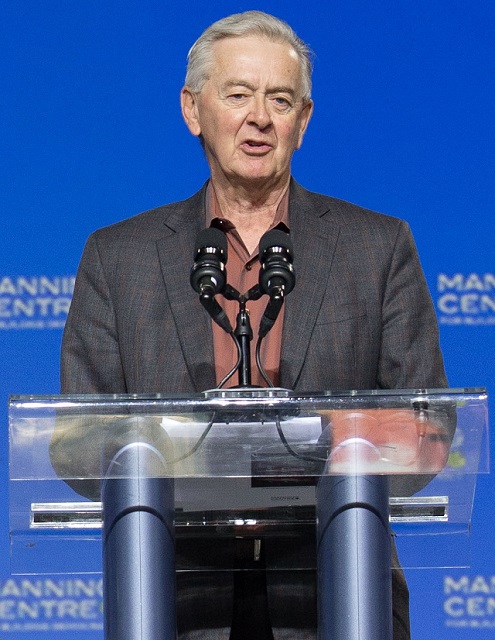
 Opinion1 day ago
Opinion1 day agoPreston Manning: Three Wise Men from the East, Again
-

 Uncategorized2 days ago
Uncategorized2 days agoCNN’s Shock Climate Polling Data Reinforces Trump’s Energy Agenda
-
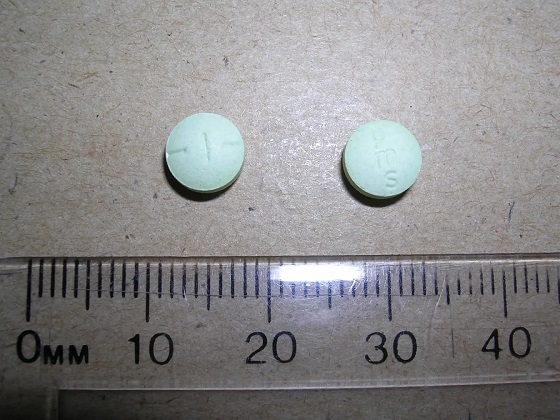
 Addictions1 day ago
Addictions1 day agoWhy B.C.’s new witnessed dosing guidelines are built to fail
-
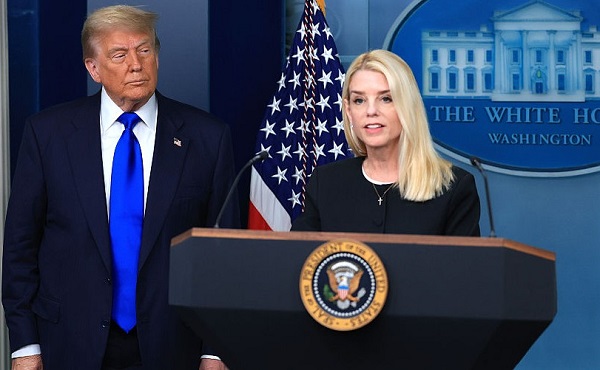
 COVID-191 day ago
COVID-191 day agoTrump DOJ dismisses charges against doctor who issued fake COVID passports
-

 Energy22 hours ago
Energy22 hours agoActivists using the courts in attempt to hijack energy policy
-
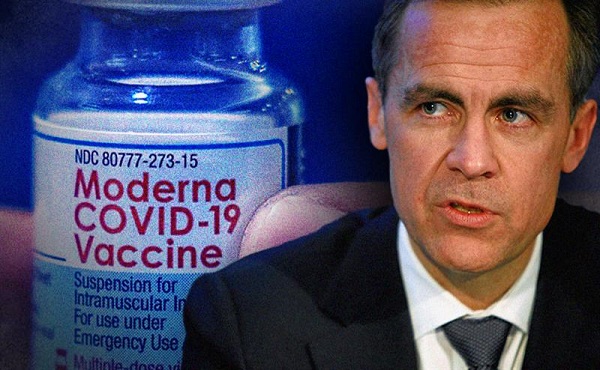
 Business1 day ago
Business1 day agoCarney Liberals quietly award Pfizer, Moderna nearly $400 million for new COVID shot contracts
-
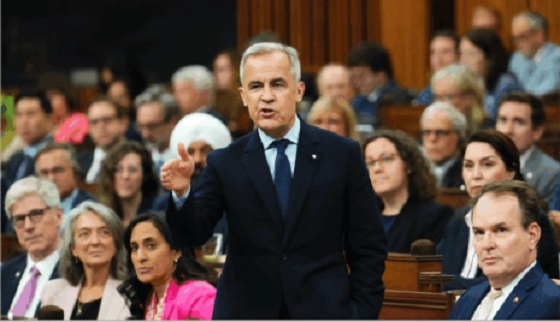
 Business1 day ago
Business1 day agoMark Carney’s Fiscal Fantasy Will Bankrupt Canada
-

 Alberta1 day ago
Alberta1 day agoTemporary Alberta grid limit unlikely to dampen data centre investment, analyst says

